Related Research Articles

Elizabeth Woodville, later known as Dame Elizabeth Grey, was Queen of England from her marriage to King Edward IV on 1 May 1464 until Edward was deposed on 3 October 1470, and again from Edward's resumption of the throne on 11 April 1471 until his death on 9 April 1483. She was a key figure in the Wars of the Roses, a dynastic civil war between the Lancastrian and the Yorkist factions between 1455 and 1487.

Joan of Navarre, also known as Joanna was Duchess of Brittany by marriage to Duke John IV and later Queen of England as the second wife of King Henry IV. She served as regent of Brittany from 1399 until 1403 during the minority of her son. She also served as regent of England during the absence of her stepson Henry V in 1415. Four years later he imprisoned her and confiscated her money and land. Joan was released in 1422, shortly before Henry V's death.
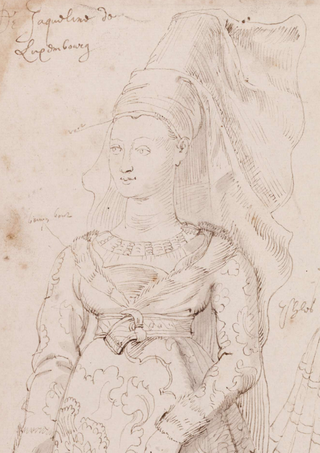
Jacquetta of Luxembourg was a prominent, though often overlooked, figure in the Wars of the Roses. Through her short-lived first marriage to the Duke of Bedford, brother of King Henry V, she was firmly allied to the House of Lancaster. However, following the emphatic Lancastrian defeat at the Battle of Towton, she and her second husband Richard Woodville sided closely with the House of York. Three years after the battle and the accession of Edward IV of England, Jacquetta's eldest daughter Elizabeth Woodville married him and became queen consort of England. Jacquetta bore Woodville 14 children and stood trial on charges of witchcraft, of which she was exonerated.

The Duchy of Brittany was a medieval feudal state that existed between approximately 939 and 1547. Its territory covered the northwestern peninsula of Europe, bordered by the Atlantic Ocean to the west, and the English Channel to the north. It was also less definitively bordered by the river Loire to the south, and Normandy, and other French provinces, to the east. The Duchy was established after the expulsion of Viking armies from the region around 939. The Duchy, in the 10th and 11th centuries, was politically unstable, with the dukes holding only limited power outside their own personal lands. The Duchy had mixed relationships with the neighbouring Duchy of Normandy, sometimes allying itself with Normandy, and at other times, such as the Breton–Norman War, entering into open conflict.
Constance was Duchess of Brittany from 1166 to her death in 1201 and Countess of Richmond from 1171 to 1201. Constance was the daughter of Duke Conan IV by his wife, Margaret of Huntingdon, a sister of the Scottish kings Malcolm IV and William I.

Peter II (1418–1457), was Duke of Brittany, Count of Montfort and titular earl of Richmond, from 1450 to his death. He was son of Duke John VI and Joan of France, and a younger brother of Francis I.

Arthur III, more commonly known as Arthur de Richemont, was briefly Duke of Brittany from 1457 until his death. He is noted primarily, however, for his role as a leading military commander during the Hundred Years' War. Although Richemont briefly sided with the English once, he otherwise remained firmly committed to the House of Valois. He fought alongside Joan of Arc, and was appointed Constable of France. His military and administrative reforms in the French state were an important factor in assuring the final defeat of the English in the Hundred Years' War.
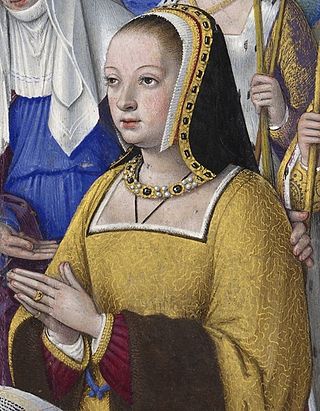
Anne of Brittany was reigning Duchess of Brittany from 1488 until her death, and Queen of France from 1491 to 1498 and from 1499 to her death. She was the only woman to have been queen consort of France twice. During the Italian Wars, Anne also became Queen of Naples, from 1501 to 1504, and Duchess of Milan, in 1499–1500 and from 1500 to 1512.

The now-extinct title of Earl of Richmond was created many times in the Peerage of England. The earldom of Richmond was initially held by various Breton nobles; sometimes the holder was the Breton duke himself, including one member of the cadet branch of the French Capetian dynasty. The historical ties between the Duchy of Brittany and this English earldom were maintained ceremonially by the Breton dukes even after England ceased to recognize the Breton dukes as earls of England and those dukes rendered homage to the King of France, rather than the English crown. It was then held either by members of the English royal families of Plantagenet and Tudor, or English nobles closely associated with the English crown. It was eventually merged into the English crown during the reign of Henry VII of England and has been recreated as a Dukedom.
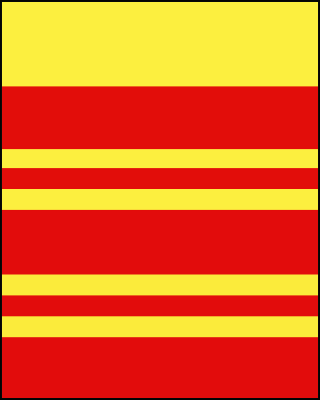
In the 11th and 12th centuries the Countship of Penthièvre in Brittany belonged to a branch of the sovereign House of Brittany. It initially belonged to the House of Rennes. Alan III, Duke of Brittany, gave it to his brother Eudes in 1035, and his descendants formed a cadet branch of the ducal house.

The House of Montfort-Brittany was a Breton-French noble family, which reigned in the Duchy of Brittany from 1365 to 1514. It was a cadet branch of the House of Dreux; it was thus ultimately part of the Capetian dynasty. It should not be confused with the older House of Montfort which ruled as Counts of Montfort-l'Amaury.

Marie of Luxembourg-Saint-Pol was a French vassal. She was, as Marie I, the ruling Countess Regnant of Soissons and Saint-Pol between 25 October 1482 and 1 April 1547. She was additionally made Countess consort of Vendôme through her marriage to Francis, Count of Vendôme. After the death of her spouse, she became regent of the County of Vendôme as the guardian of her son, Charles de Bourbon.
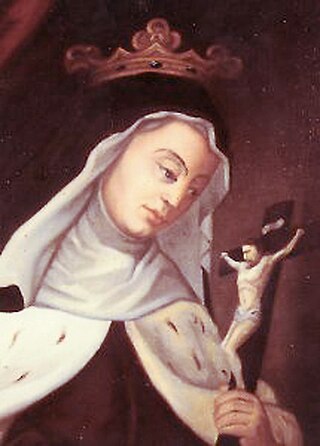
Françoise d'Amboise was a French Roman Catholic declared "blessed" and a duchess consort of Brittany.
Countess of Richmond is a title that was given to the wife of the Earl of Richmond. Women who have held the title include:
Margaret of Baux was a Countess of Saint-Pol, of Brienne, and of Conversano. She was a member of the noble House of Baux of the Kingdom of Naples, which had its origins in Provence dating back to the 11th century. Her husband was Peter of Luxembourg, Count of Saint-Pol, of Brienne, and of Conversano.

Margaret of Brittany was a duchess consort of Brittany. She was the elder of the two daughters of Francis I, Duke of Brittany, by his second wife, Isabella of Scotland.
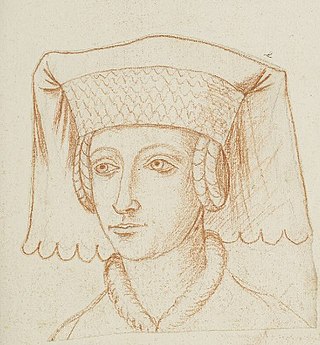
Marguerite d'Enghien, was the ruling suo jure Countess of Brienne and of Conversano, suo jure Lady of Enghien, and Lady of Beauvois from 1394 until an unknown date.

Peter of Luxembourg was count of Saint-Pol. His inheritance included the counties of Brienne, Conversano and Saint-Pol.
Marie of Luxembourg, Duchess of Penthièvre from 1569 to 1623, Princess of Martigues, was the daughter of Sebastien de Luxembourg, Duke of Penthièvre and Marie de Beaucaire. She is an important figure in the history of the Duchy of Brittany; a distant descendant of Joan of Penthièvre, Duchess of Brittany and her husband Charles of Blois, Duke of Brittany, she aspired to restore the sovereignty of the duchy, and to ascend to the throne with her husband Philippe Emmanuel, Duke of Mercœur, brother-in-law of King Henry III and Governor of Brittany. The victory of Henry IV prevents her from carrying out her project.
References
- M. Prévost: Catherine 7 de Luxembourg. In: Dictionnaire de Biographie française, vol. 7 (1956), col. 1417–1418.